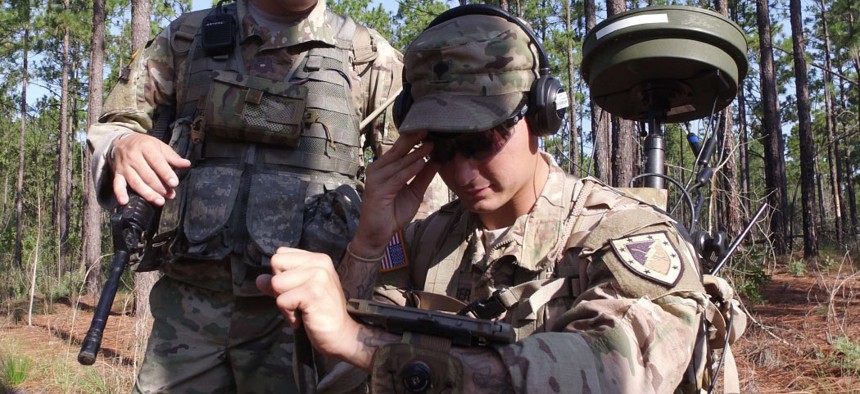EW ideas get real at Army's Cyber Quest
The latest exercise focused on integrating cyber and electromagnetic tools and techniques to improve a commander's situational awareness.
The Army, which has been working to integrate cyber operations and electronic warfare into the full range of military operations, put some of its theories into practice recently during the Cyber Quest 2016 exercise.
Led by the Cyber Center of Excellence at Fort Gordon, Ga., home to the service’s Cyber Command, the exercise focused on ways to enhance a commander’s situational understanding of cyber and EW activities and how they factor into a full operational picture, according to an Army release. Several Army organizations took part, along with representatives from industry and academia.
As with other recent exercises, such as Cyber Blitz held in April, the idea was not to look at cyber and EW in a vacuum, but as much a part of operations as traditional, visible elements.
"When we talk [situational understanding], we're not just talking bits and bytes. It's all these pieces. It's the electronic magnetic spectrum -- it's the enemy, the red, the blue, the gray… ,” said Col. Timothy D. Presby, Training and Doctrine Command Capability Manager. “How do you aggregate that in such a manner that you can display it in a timely enough fashion to influence a commander to make a decision."
An assessment of the Army's Mission Command and Cyberspace operational needs determined that cyber was the biggest area in need of improvement, Presby said, adding that bringing in industry and academia was considered important to finding new technologies and techniques for addressing those needs.
During the exercise, the Army sought to integrate the different elements of warfighting into what Presby called a “cyber backbone.”
The battle staff was essentially separated into two groups. "The first is those folks who are cyber or EW," said Lt. Col. Heather Levy, commander for Cyber Quest 2016 Infantry brigade combat team from the 25th Infantry Division. "Those folks are getting great hands-on experience with new tools that may or may not become part of the Army's arsenal; and getting the opportunity to do current operations and planning in an environment where they're the most important people in the [tactical operations center]. And that happens rarely.
"The rest of the soldiers here are part of [military occupational specialties] that wouldn't ordinarily be that concerned about," cyber and electromagnetic activities, Levy said, referring to herself as well as the intelligence officer, operations officer and fires officer.
The Army had issued a solicitation last October looking for, among other things, ways to leverage a program of record—the Electronic Warfare Planning and Management Tool—as a platform for a converging cyberspace and electromagnetic spectrum situational awareness. That produced a number of tools that the Army was able to employ and improve during the exercise.




